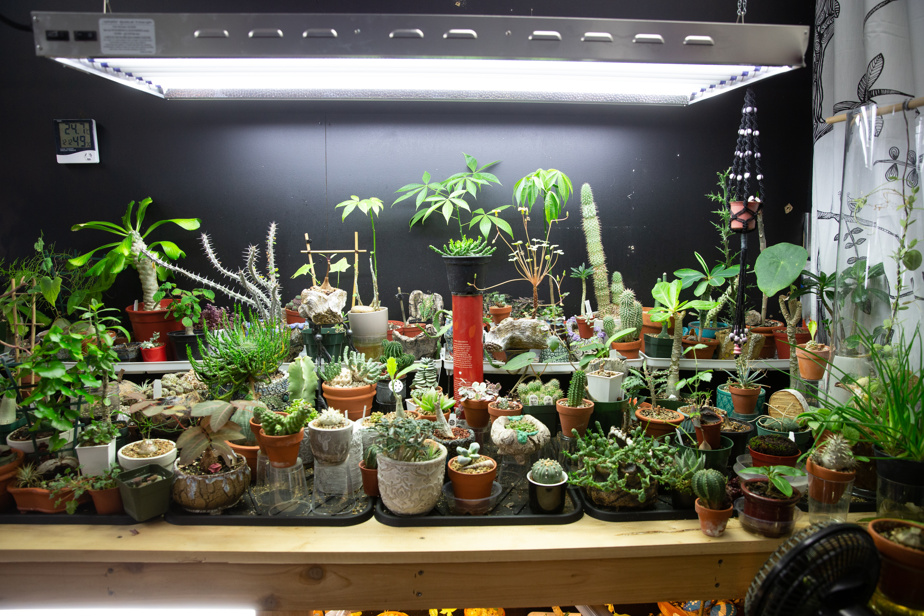The days are getting longer, the sun is hotter, we begin to dream of spring. Inside, our plants begin their rebirth. But for our small domestic plant world, and for those who take care of it, it is often the beginning of a nightmare: the appearance of winter bugs. A few tips to avoid sinking into despair.
An often unavoidable problem
Mealybugs, white flies, mites, scale insects, kermes, spider mites, whiteflies, aphids, a whole vocabulary to designate a tiny, often microscopic, but voracious fauna. An army that seems to coordinate to attack our plants at this time of year.

PHOTO ROBERT WEBSTER, WIKIMEDIA COMMONS
Mealybugs can quickly become a nightmare for houseplants if left unchecked. There are more than 1000 species.
“In reality, the problem starts in the fall when we bring our plants indoors,” says consultant agronomist Claude Gélinas, an expert in plant predators and diseases.
Even with washing or other preventative treatments upon entering the home, it’s almost inevitable that a number of critters in one form or another will manage to evade elimination.
Claude Gélinas, consultant agronomist
Plants purchased during the holidays or received as gifts can also become a contamination factor. If the producers go out of their way to eliminate undesirables, profitability requires, these precautions are much less applied by retailers, especially supermarkets. And it only takes one specimen to affect a host of healthy plants.
Well out of sight, all this undesirable little world goes dormant during the winter. He will come out of his discretion when the days get longer, an awakening favored by the high temperatures and the dry atmosphere of our apartments. This is the start of trouble.
An army of vampires
Indoor plant pests abound and most of them are thirsty vampires. This is the case of countless species of mealybugs, red spiders (mites) or white flies (whiteflies). They feed on the sap of plants which die more or less quickly depending on the degree of infestation. When scale insects are involved, the leaves become sticky due to the honeydew they produce. Very disgusting! And the ballet of whiteflies is hardly appreciated either. As for the tiny mites, they usually reveal their identity through their spider web-like threads.

PHOTO GUIDO BEHNE, WIKIMEDIA COMMONS
Their internal ballet is unpleasant, but, in addition, whiteflies live at the expense of the sap of our plants.
intensive care
“When a plant is attacked too much, it is better to get rid of it to avoid a generalization of the problem”, indicates Claude Gélinas, a radical option also recommended by the Botanical Garden of Montreal.

PHOTO PIERRE MCCANN, LA PRESSE ARCHIVES
That little brown dot at the base of an orchid is a scale insect. Without being eliminated quickly, these critters multiply very quickly and become increasingly difficult to eradicate.
To avoid this heartbreaking solution, you must act at the first signs of invasion. First isolate the victim, then as a first treatment, give him a shower with a good stream of water to dislodge a crowd of undesirables. Then, eliminate each resistant bug by hand, using a cotton swab. An operation followed by watering with an insecticidal soap that will probably have to be repeated from time to time. Claude Gélinas also recommends a soil activator, such as Earth Alive, which will precisely allow the weakened plant to draw the maximum of nutrients from the soil thanks to the contribution of micro-organisms.
A useful recipe
In commercial production, constant biological control takes place. Producers use specific predators in the hundreds of thousands, if not millions on a regular basis. Difficult to use at home. A few years ago, before it applied integral biological control, the Botanical Garden claimed to control the vast majority of its greenhouse insect problems thanks to these two solutions:
- 20 ml of insecticidal soap and 20 ml of alcohol mixed with one liter of water.
- 10 ml of dormant oil mixed with a liter of water. Water once a week for four to five weeks, alternating each solution.
